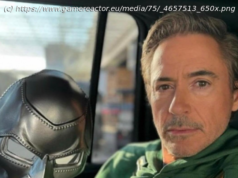Falling in love with Email Marketing: How Kitfox and their fans found love.
Boyfriend Dungeon is an indie game being developed by Kitfox Games about dating luxuriously beautiful weapons and then using them to fight monsters. It was originally announced back in October 2017. On August 15th of 2018 the Kitfox team launched a Kickstarter for the game.
The Kickstarter took the internet by storm and went totally viral on social media. The Boyfriend fever even reached as far as general interest magazines like Gentleman’s Quarterly. The game was funded within hours and when the Kickstarter ended 30 days later it earned 4x its initial goal. The team executed on so many levels and in so many channels it was a truly magical thing to behold. For more information, check out these deconstructions that were written by the team.
I was honored to be given the opportunity to be a consultant for their Kickstarter to help them develop their email marketing strategy. I worked directly with their incredibly talented and diligent community manager, Victoria Tran. Together we developed a month-long strategy for their mailing list. Victoria then took that strategy and did the hard work of writing and publishing the emails through their Mailchimp account. The following post deconstructs the email marketing tactics that were deployed during the campaign. Even if you are not launching a Kickstarter, most of these tips can be applied to promoting your own game.
TL;DR overview of what our strategy was for the Boyfriend Dungeon Kickstarter:
The following are the 5 emails that were sent out during the Kickstarter. The rest of this article deconstructs the strategy behind them.
Email #1) Boyfriend Dungeon now on KICKSTARTER — and a cat?!
Sent 08/15/2018
Email #2) Hey Gorgeous Sunder’s Boyfriend Dungeon Love Letter
Sent 08/23/2018
Email #3) New Girl in Town Valeria’s Boyfriend Dungeon Love Letter
Sent 08/27/2018
Email #4) Ask me anything Isaac’s Boyfriend Dungeon Love Letter
Sent 09/07/2018
Email #5) Trailer music released Seven’s Boyfriend Dungeon Love Letter
Sent 09/11/2018
Email #6) ONLY 24 HOURS left to back Boyfriend Dungeon
Sent 09/14/2018
Also here is the open rate and click through rates for each of those emails.
Since the founding of the studio, the Kitfox team has placed most of their marketing effort on Twitter and email was not a primary means of communicating with their fans. Despite it being a secondary strategy, they did manage to grow an email list of over 6000 subscribers through a signup on their website and by having a form available at all the conventions they attended.
Prior to the Kickstarter, Kitfox would email their list on average about once a month. The emails did a good job of introducing the team and providing free giveaways such as a song from Boyfriend Dungeon. However, for new game launches they typically only emailed 1 time to announce the game.
You can see their back catalog of emails here
A few weeks before the Kickstarter, I met with Victoria and listened to what their goals were with the Kickstarter and some of the limitations they were working within. There wasn’t much time before the start of the Kickstarter and most of the creative team was entirely heads down on getting the game ready. We brainstormed some possible options for their email marketing strategy. They were new to advanced email marketing tactics such as lead magnets and autoresponders so I recommended that they start small: try to up the frequency of their email communications and build a relationship with those fans.
It was clear that they needed to center their email campaign around the strongest resource at their disposal: The Boyfriends. The concept I presented to Kitfox was for each week of the Kickstarter they send an update written in the voice of a different boyfriend character from the game. Each email would reveal a bit about the character and a bit about the game’s world. Each email would also have a clear call to action to back the Kickstarter.
The Dateable Weapons are undoubtedly the unique selling proposition for this game. However, all of Kitfox’s trailers and media kept their individual personalities of the BFs at arm’s length. The inherent format of email allows for two things over social media:
With email there would be the room and the time for the studio to really put the boyfriend’s personality right in front of fans’ adoring eyes. This marketing campaign was really the first time and place where someone could have some alone time with each of The Dateable Weapons and I wanted fans to revel in it.
My goal was to add a new marketing channel for Kitfox. Email provides a more intimate channel of communication because it is not public like social media. Email also allows for more words and more pictures and therefore more room to tell a story. This plan also makes email the only place where you can get this content, it wasn’t (and really couldn’t) be shared on the other channels such as Facebook and Twitter.
The plan was a bit goofy, a bit funny, and a bit sexy. It was perfectly aligned to what the game itself would be.
People rarely just hand over their email address. There must be an extra incentive in exchange for their email to break the ice so fans will join. These incentives are called Lead Magnets and typically take the form of a freebie such as a soundtrack download, early access to a beta, or a digital ebook. The Kitfox team was already scrambling to get the Kickstarter released so we didn’t have time to put something like that together. Instead, I though they should try to pitch the promise of secret love letters from The Dateable Weapons as the lead magnet.
Victoria updated the Kickstarter page to advertise the love letter offer (screenshot below.)
By the end of the Kickstarter campaign, the Kitfox email list grew by 335 subscribers.
Unfortunately a typical lead magnet that uses a beta code or other type of digital downloadable yields much higher results. For example, I have seen campaigns for a beta download yield 50,000 email signups. With the insane traffic that the Kickstarter got I was expecting the number of new followers to be much higher.
I have a couple hunches for this. First: the chaos of the Kickstarter could have crowded out the call to action for the email signup. By necessity, Kickstarter pages must be pitching the game and the next reward tier. A separate callout for a downloadable good probably doesn’t make it through the noise. Maybe it is difficult to build email subscribers during a Kickstarter?
Second hunch: If the lead-magnet was something more tangible it could have yielded more sign-ups. The email signup call to action that Kitfox used was “Get love letters from the Bae Blades.” Perhaps people didn’t think the Kitfox team was being literal in that you would literally be getting sexy notes from some totally beautiful beings. Maybe they just assumed it was your standard, boring, “here is some news” type of email. Perhaps a more tangible download would have done better.
For example what if we had a PDF version of a 2019 calendar with each month represented by one of the dateable weapons. Or a zip file containing a bunch images of the Bae Blades perfectly formatted for phone or computer backgrounds. Would that sound more attractive to you?
The launch day email is going to be the one that gets the most interaction. It should be short, to the point, and with a very clear call to action. You don’t want anything to stand in the way of you and your potential customer backing your game. Your true, die-hard fans will back your game because of this email.
Victoria crafted an excellent launch email that was sent the moment the Kickstarter went live.
Here is a screenshot of it:
The link to the Kickstarter is a button with a clear call to action: “Support Boyfriend Dungeon Now”
The button is located almost at the top of the email and visible without scrolling on most devices.
There is an intriguing bit of copy just before the CTA button. “(Check out the rewards!!! Body pillow alert.)” Even if you do not intend on backing the game it does entice people to click the button to see whether a body pillow warning is truly warranted.
However, the best thing Victoria did was add the following bit of copy…
« Hey you, soon I’ll be taking over to send you a very special love note. »
This message from Sunder is what is called an open loop. It is the advertising equivalent of the cliffhanger at the end of a TV episode. It is the equivalent of the secret ending that follows the credits of a Marvel movie which hints at the next film. This open loop boosts the open rate of your next email because people will want to know what happens.
You must do this because a large population of people who follow you are not super fans but are fence sitters and need more encouragement to open the next email. The best way to do that is to send more emails…
If you are thinking this is some cheesy hook and who would ever follow this, it actually works. See this awesome tweet from someone who was obviously intrigued by that rippling, flowing, golden man chest.
Many developers make the mistake of only firing off one email saying “my game has launched” or “my Kickstarter is live” and then never contact those fans again. That is a huge mistake! The majority of your audience is not going to drop everything the first time they receive your email. They need reminding. I convinced the Kitfox team to email their audience at least once a week during the campaign and promised that nothing bad would happen. They were brave and agreed.
The fans continued to open and to click and they didn’t unsubscribe in disgust.
In fact, if the Kitfox team only sent one email at the start of the campaign they would have missed out on 66% of the traffic that their total email campaign would eventually generate (that is 1964 total clicks)!
Many indies are scared of their mailing list. The fear is that weekly emails are too frequent, too desperate, and that there will be a wave of unsubscribes because your followers are feeling “SPAMMED.” This is an irrational fear. Your fans want to hear from you.
Here is the proof…
The following graph represents the number of opens vs the number of people who unsubscribed. You see that little red line bumping a few pixels above the axis? That is the number unsubscribes. As you can see there was no mass exodus. The mailing list didn’t collapse.
After sending 6 unique emails to 6868 subscribers, only 2% of their total audience unsubscribed. 2%! Are you really going to let that super tiny 2% keep you from getting 66% of your clicks? Don’t fall prey to the psychological trap of loss aversion (aka the irrational fear that it is worse to lose something than it is to gain an equivalent amount.






